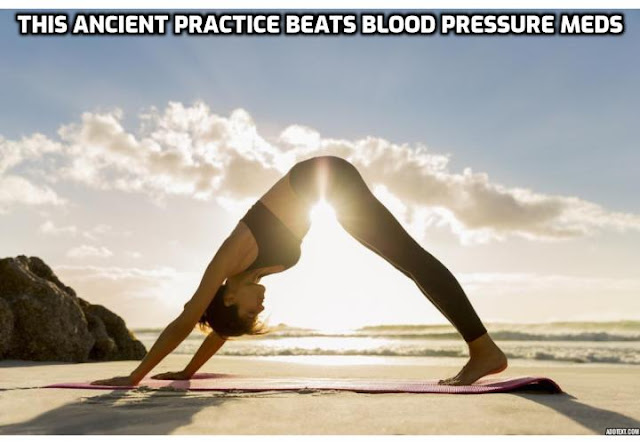 |
Click on Here to Discover How You Can Increase Stamina and Heal Erectile Dysfunction Without Using Drugs |
Combat Erectile
Dysfunction - This Heart Beat Irregularity Raises ED Risk 61%
Science
is clear that high blood pressure and/or cholesterol
are risk factors for ED,
but they’re not the only ones.
Researchers
have just published a study in the Arab Journal of Urology showing that atrial
fibrillation is another cardiovascular condition that puts men at risk of ED
too.
Atrial
fibrillation is the most common type of irregular heartbeat.
According
to the American Heart Association, instead of beating regularly to send blood
to your lower heart chambers, your upper heart chambers quiver or stutter
instead, pushing the blood through to the lower chambers with irregular stops
and starts.
Because
your blood isn’t pumped as efficiently as it should be, this puts you at much
greater risk of blood clots, strokes,
and even heart failure.
It’s
a serious condition all on its own, but most people aren’t aware of it.
So,
perhaps if men knew that it caused erectile dysfunction too, they might pay it more attention, and that might
help to save them from more serious health problems.
The
authors of the new study looked at previously conducted studies on the
relationship between atrial fibrillation and ED.
They only included studies with the strongest scientific results, which
whittled the field down to just five. The subjects in these studies totalled
4,096 men with atrial fibrillation and 25,733 without it.
Unsurprisingly
the research concluded that conditions present alongside atrial fibrillation
cause erectile dysfunction, so we’re talking about things like smoking, high blood pressure, high cholesterol, obesity,
lack of physical activity, and sleep apnea.
When
these were left out (to test what effects atrial fibrillation on its own had on
erectile dysfunction) men with atrial fibrillation were still 61 percent
more likely to have ED
than the men with regular heartbeats were.
The
authors could not explain the mechanisms behind this relationship, but they did
use previously published studies to speculate about it.
Erectile dysfunction
occurs when reservoirs within the penis don’t receive enough blood to sustain enough hardness for sexual intercourse. This usually happens when
your blood vessels are damaged, possibly by inflammation,
possibly by oxidative stress, possibly by hormonal disturbances, or possibly by
a range of other factors and their interactions with each other.
One
chemical necessary for an erection
is nitric oxide, which one study suggested was in short supply in atrial
fibrillation patients. Could there be a link there? It certainly looks that
way.
Another
study suggested that atrial fibrillation patients had far higher levels of inflammation
in their bodies than people with regular heartbeats, something that can damage
penile arteries.
And
beta-blockers, the most commonly prescribed drug for atrial fibrillation patients
have also been found to cause ED.
Combat Erectile
Dysfunction - Men: Your ED Is Caused by Your Blood Type
Occasionally
studies are released showing no matter how hard we try, we are still somewhat
dependent on our genes and biological constitutions.
The
December 2016 journal Archivio Italiano Di Urologia released a study from
Ordu University in Turkey revealed just that.
It
compared the occurrence of ED
in men with different blood group types.
Results: one specific blood group is almost 500% more likely to
suffer ED
than another. But even if you belong to this blood group, there is some light
at the end of the tunnel.
Of
their 350 subjects, some had ED
while others were sexually fully functional.
To
ensure that other illnesses like cardiovascular disease and diabetes
did not muddle their conclusions, they recorded the presence of these diseases
and made sure the results remained the same even without the subjects with
these conditions.
Men
with blood type O scored the best in the study, meaning their Erectile Dysfunction was less severe or non-existent.
This
was followed by those with B-type, then those with A-type, and finally AB-type
scoring the worst.
This
pattern held across all age groups.
Comparing
other types to O-group, the AB group had a 4.7 times higher risk of ED,
the A-group a 3.9 times higher risk, and the B-group a 3.5 times higher risk.
In
other words, when it comes to ED,
people with the AB blood type have the greatest chance of developing ED
and the worst symptoms when it occurs, while those with the O-type are the
luckiest in both frequency and severity.
Now,
despite your blood type, there are still a lot of things you can do to improve your erection function. And you’re by no means a slave to this
condition for live.
You
can stop smoking, limit your alcohol intake, eat plenty of vegetables and fruit,
avoid refined vegetable oils and processed non-whole grains, exercise
regularly, and so forth.
Combat Erectile
Dysfunction - Is Age Really Related to ED? (fact or fiction)
Most
medical scientists believe that ED
becomes more common as men age. Studies have certainly backed up this
perception.
But
one of the biggest problems with studies is the fact that they rely on men’s
honesty to accurately self-report their ED.
Some men may hide it; others may report it when it is not actually present.
To
get to the heart of the age/ED relationship, scientists need to know more about
onset and other concurrent conditions to separate myth form reality.
To
obtain some sense of the age profile of the people who have ED
in the general American population, scientists decided they would consult all
the electronic medical and insurance databases to which they could obtain
access. They published their study in the International Journal of Clinical
Practice.
They
wanted to answer two questions:
1)
Are older men more likely to have been diagnosed or treated for ED
than younger men?
2)
If men with other conditions that cause ED
are excluded from the analysis, are older men still more likely to have been
diagnosed or treated for ED than younger men?
Their
analysis answered both these questions with a solid “yes.”
The
average age of men with ED
diagnosis or treatment was 55.2 years.
Between
ages 18 and 29, only 0.4% of men were diagnosed. By the time men reached 60-69,
the diagnosis rate had shot up to 11.5%.
Only
4.6% of men in their 80s obtained diagnoses, dropping further to 0.9% in their
90s.
When
men with high blood pressure, other cardiovascular disease, diabetes,
depression,
and benign prostatic hyperplasia were excluded, older men were still more
likely to seek diagnoses than younger men were.
Therefore,
up to men’s seventh decade, ED
and age seem to be strongly related.
Since
many men with ED
may not seek diagnoses, though, the validity of this assumption is dubious.
That
is why these scientists do not claim their study can show that age actually
causes ED.
And
that’s where I agree. Age does not equal erectile dysfunction. It’s not a normal part of aging. How can I make such a
bold claim?
For
more ideas to combat erectile dysfunction, watch this video - I CAN'T GET "IT" UP!!! (How To FIX Erectile Dysfunction FAST)
Because thousands of men, of all ages, have used the simple erectile dysfunction exercises found here, to completely cure themselves – often the very first day…
This post is from the
Erectile Dysfunction Master Program, which was created by Christian Goodman for
men who are looking for the best erectile dysfunction natural remedies. This is an all-natural system that utilizes
the power of exercises to permanently cure erectile dysfunction. By following
the techniques in this program, you will be able to get hard fast without pills
and maintain stronger erections for hours so you can enjoy sex again.
Erectile problems can be physical or emotional. If your
problem is physical, you need to exercise the muscles around the genital area.
If your problem is emotional, then you need to learn relaxation techniques.
Erection Master will teach you steps that can help get rid of your erectile
dysfunction for good. As long as you're willing to commit 30 minutes of your
time, 3 to 7 days a week for 1 to 2 months, they'll work for you. You can
practice the steps alone or with your partner.
These techniques are far more effective than Viagra, Cialis
or other drugs for erectile dysfunction. The drugs only help about 40% of men
who use them and can also cause very serious side effects.
You
may also like:


